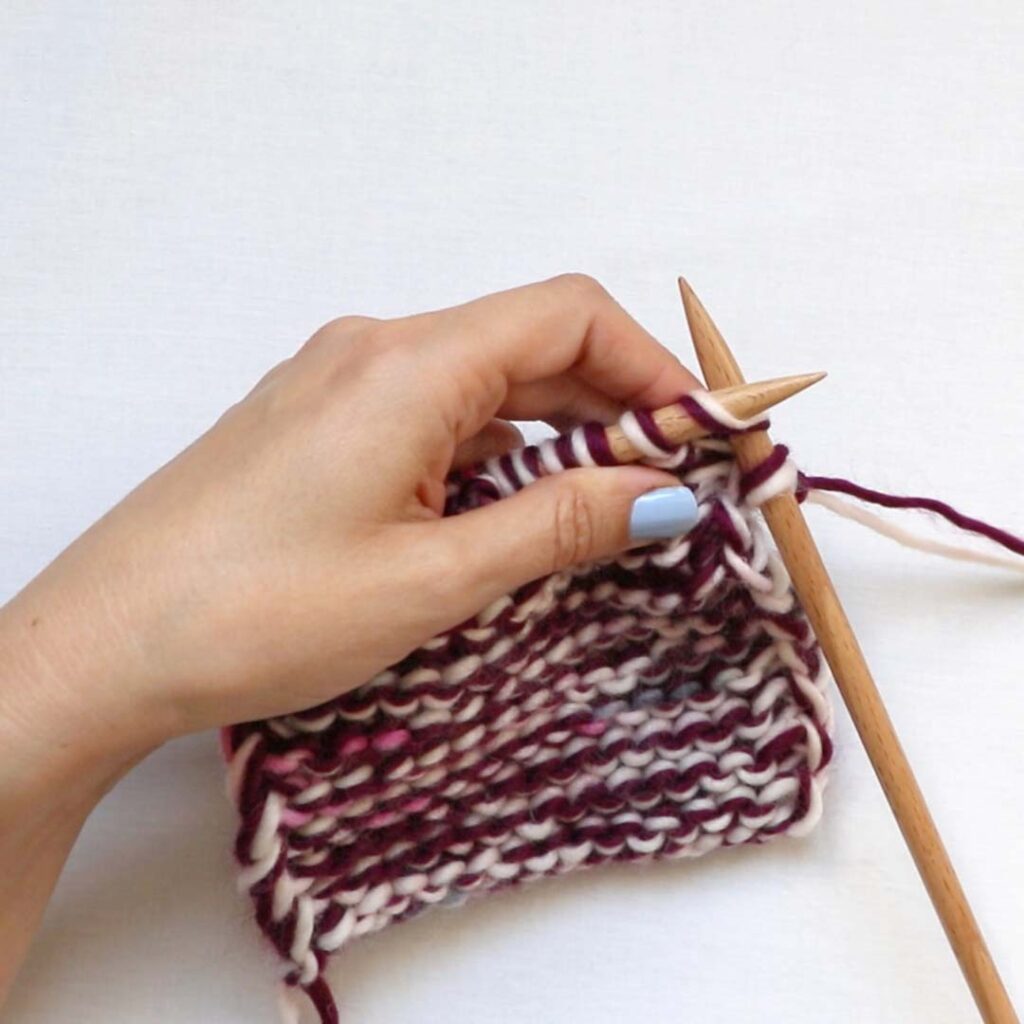
Here are eight different knitting techniques of knitting that every beginner that wants to progress needs to know. In this post we are going to show you a few techniques that will help you to go a step further and will give your knits a better aspect. These techniques are not the basic techniques but they are easy techniques that you can quickly learn and add to your repertoire.

To show you the following techniques we are using our knitting yarn the Petite wool in color Wine, Colorado, Yarnicorn, Flamingo and our 11 us (8 mm) needles.
Double stranded knitting
Double stranded knitting is used in several projects and it has a lot of functions like: add volume and give your yarn a chunky wool effect, and also to make color work techniques like melange or gradients.
To work a double stranded project: Take the end of two skeins of yarn, hold them together, and knit as if they were one strand.
This is the easiest technique of all, so easy that you can find this technique in a beginner knitting kit.
The Bjerg Cardigan is the best example of the texture that gives you the double stranded knitting.
Knit 1 through the back loop
Working the stitches through the back loop gives you a twisted stitch effect and creates a texture, to do it: introduce the right hand needle through the back loop and knit the stitch.
Purl 1 through the back loop
To purl 1 stitch through the back loop, introduce the right hand needle through the back loop and purl the stitch.
Slip 1 stitch with the yarn in the front and slip 1 stitch with the yarn in the back
Knit slip stitch of slip 1 stitch without working them is very useful in knitting, it gives you perfect borders and can also help avoid scarf curling and knitting effects, there are 2 ways of slipping stitches: with the yarn in the front and with the yarn in the back.
To slip a stitch hold the yarn in the back or in the front, depending on the texture you want to give to your project, introduce your right hand needle through the next stitch as if to purl on your left hand needle and pass it without knitting to your right hand needle.
The linen stitch also known as fabric stitch uses both techniques, with the yarn in the front and with the yarn in the back, the texture is amazing. To practice this technique you can knit our Hibiscus top.
Knit 1 below
Knitting 1 stitch below is a knitting technique used in a lot of popular stitches like Shaker rib stitch or brioche stitch. This stitch is worked similar to regular knit stitch, except that you will insert the right needle into the stitch right below the one you’re about to knit. The stitch above will become a strand behind the one you just worked.
Purl 1 below
This stitch is worked similar to regular purl stitch, except that you will insert the right needle into the stitch right below the one you’re about to purl. The stitch above will become a strand behind the one you just worked.
Drop 1 stitch
The drop stitch is a very easy and beautiful stitch. This stitch is used to make bobbles stitch, colorworks and very lacy effects.
To drop 1 stitch push the stitch indicated in the pattern off the needle and unravel it back and forth until you reach the desired row or the row indicated in the pattern. Be very careful because you do not want to undo more than you need.
Work stitches as they appear
This technique is the most used technique. Almost every pattern has this step, this is used to shorten the pattern instructions. At first this technique can be scary because as a beginner it can be difficult to identify the stitches. But the moment you learn to differentiate one knitted stitch from a purled stitch this technique is going to be the most useful.
So when you reach the row you have to work the stitches as they appear, identify the first stitch of your left hand needle, if it is a knit stitch, knit the stitch if it is a purl stitch, purl it. Continue working the stitches as they appear until the end of the row.
Now that you learn these easy techniques you will give an upgrade to your garments.
We hope you like this 8 techniques and that soon you share your projects with it on social media with the hashtag #weareknitters 🙂 Until next time!



